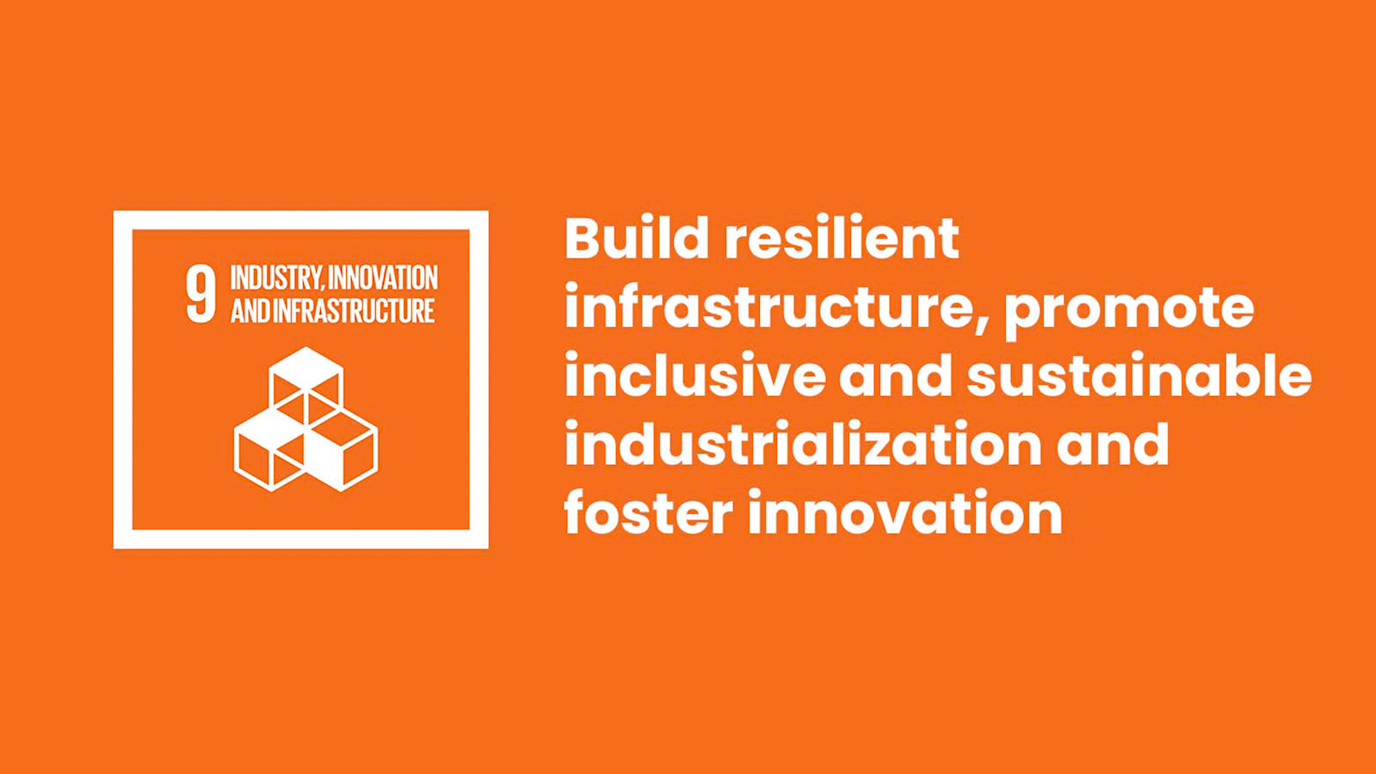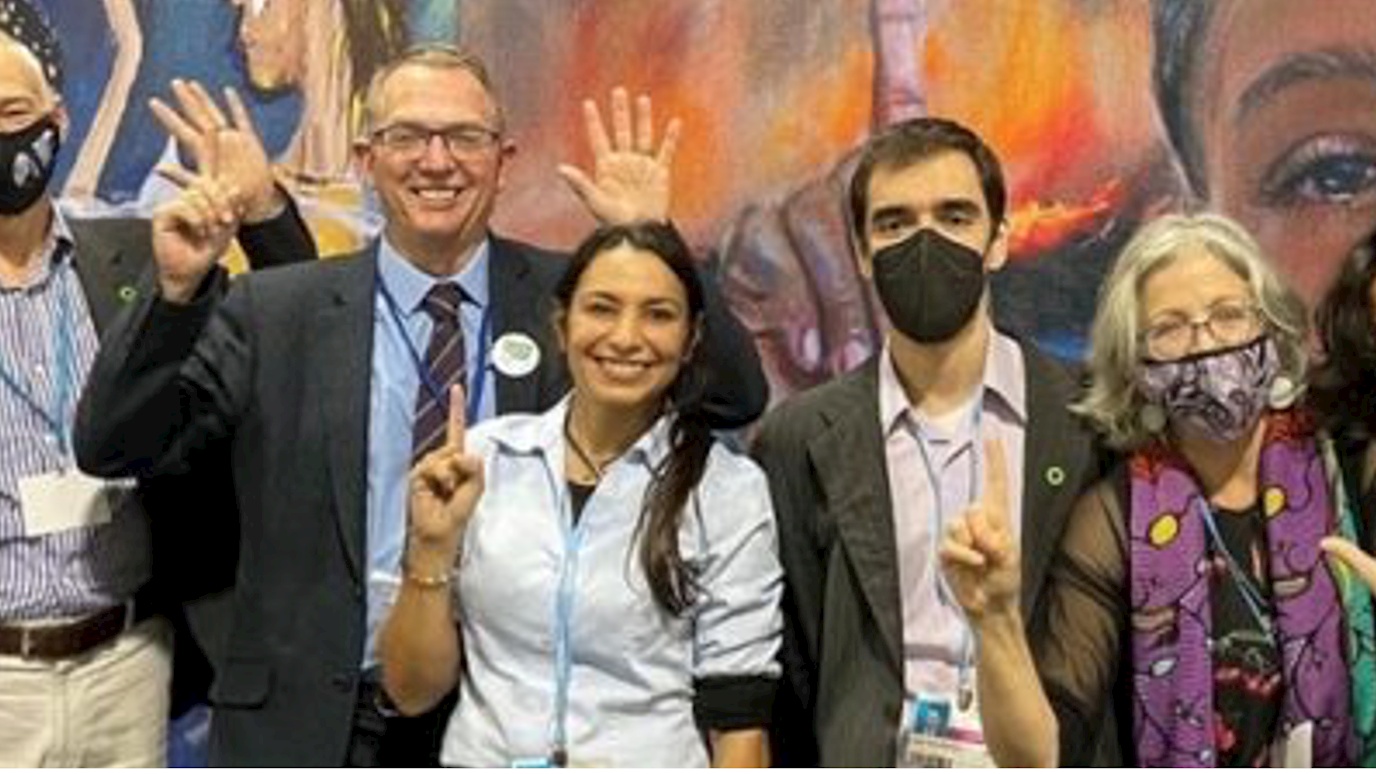In recent years, the world has been subject to several transformations that have changed the way people live, consume and work, writes Juan Pablo Rud, reflecting on SDG 9.

Technological change has brought new products and services such as electric vehicles and smart metering and has enabled new ways of organising the workplace. The onset of the COVID-19 pandemic and lockdown in March 2020 revealed only too clearly the opportunities for digital homeworking for service professionals, while ‘frontline’ workers such as delivery drivers, nurses and public transport staff continued to be at work. At the same time, demographic trends (such population growth in Africa, Asia and Latin America) and intensifying climate change have generated new resource-led challenges and new social and economic demands from citizens all over the world. Inhabitants of low-income countries face the harsh prospects of being excluded from the benefits of new technologies and innovations while at the same time their livelihoods become increasingly vulnerable to more frequent extreme weather events caused by climate change. Inequalities regarding public health and vaccination are placing additional pressures on infrastructures and revealing unequal opportunities for mobility and welfare.
Sustainable Development Goal (SDG) 9 encompasses all these intersecting issues when proposing more resilient infrastructure, sustainable forms of industrialisation and fostering innovation that can generate employment and increase standards of living for a world that is likely to reach 10 billion by the middle part of this century. Much of the growth in world population will centre on sub-Saharan Africa, and that will bring with it fresh demands for digital connectivity, energy, and equitable access to technology.
Critical infrastructure
Research has shown that investing in critical infrastructure can have very high economic and social returns. Electricity access can help firms becoming more productive and create more jobs; roads can connect isolated villages to labour and product markets; safe water and sanitation improve health outcomes; internet and mobile technologies facilitate innovation, improve markets, and allow households to access more goods, private and public services and to share risk, among other potential benefits.
Climate change has already become a threat to infrastructure, communities and firms. More frequent hurricanes, floods or wildfires are interrupting the provision of energy, contaminating water, damaging roads, buildings and machinery. Insurance providers estimate that in the first six months of 2021 alone there was around $42 billion worth of insured losses due to natural disasters. More imperceptible phenomena, such as increasing temperatures, the rise of sea levels or more variable precipitation over months, even years, can also disrupt the provision of key services, by damaging water pipes, increasing substantially the demand for electricity to levels that exceed the installed capacity, or even reducing firm and labour productivity.
The effects of climate change on infrastructure, firms and households cannot simply be measured by the amount of money needed to replace a power line or rebuild a house or a plant. Households can bear costs that have longer-run implications, such as loss of school days for children, or jobs. Firms can lose equipment, specialised workers or commercial contracts, threatening their ability to survive. This generates many layers of uncertainty. Not only the frequency and magnitude of climatic events and changes associated to global warming are largely unknown, but also how firms and households will respond, adding uncertainty about the behaviour of both the supply and the demand for infrastructure and goods and services, more generally.
Image shows river floods in Tilff, Belgium, July 2021. Photo by Régine Fabri.
Finance and the environment
Complementary to this, there is an important and well-documented role that finance plays in facilitating investment, innovation and job creation, particularly in the global South . But there is still a limited understanding of the relation between finance and the environment. On one hand, financial development helps firms to be created, to innovate and to overcome challenging economic conditions in low-income countries. At the same time, technologies, investment and job creation can come at the cost of more emissions. It is not surprising to find that the top 50 most polluted cities in the world are all in high-growth regions, such as China, South and South-East Asia. Funding investments in resilient technologies and carbon abatement are therefore most urgent in these parts of the world and integral to the decarbonising ambitions laid out in the 2015 Paris Agreement.
How to move forwards towards the objectives laid out in SDG 9 in a sustainable way?
Most of the growth in energy demand and greenhouse gas emissions over the next few decades is expected to come from the global South. At the same time, most of the disruption associated with climate change is also expected to happen in low-income countries.
The UN Climate Change Conference COP26 has three main goals that speak directly to the challenges the developing world faces in relation to SDG 9: mitigation to secure global Net Zero emissions by 2050, adaptation to build resilience to the inevitable effects associated to climate change, and mobilisation of finance to fund technology, innovation and greener infrastructure. All of which means that constructing greener infrastructures, retrofitting existing transport and communication systems, and supporting innovative technologies will be essential in terms of reconciling resilience with resource usage.
Tensions between SDG 9 and COP26 goals
There are inevitable tensions between SDG 9 and COP26 goals, and some important challenges. From an institutional standpoint, countries need to adjust their regulatory frameworks to incentivise green innovation and credit and to make infrastructure more resilient. But the political economy of change may prove difficult, as the transition to a greener economy may induce large losses in some sectors (such as workers and stranded assets in the coal or oil industries) and economic growth cannot be easily sacrificed in low-income countries. And resources such as rare earth minerals as well as steel will be needed to construct renewable energy infrastructures including solar panels and wind turbines.
The transition to a low-carbon world that can cope with the inevitable consequences of a changing climate is certainly costly. As part of international agreements, developed countries have agreed to raise a USD100 billion every year to assist developing countries in their efforts to mitigate emissions, adapt to climate change and support green innovation. Not only is it the case that this may not be enough, but so far these amounts have not yet been reached and many of the disbursements come in the form of loans, which will need to be repaid.
This is particularly challenging because countries need to grow to be able to sustain higher levels of debt, and growth is not always green.
Dr Juan Pablo Rud is Reader in Economics at Royal Holloway. His research in development economics has been published in general interest and top field economics journals. Juan Pablo’s work includes topics related to natural resources, environment and climate change, agriculture, infrastructure provision and infrastructure regulation, public sector and labour markets in Asia, Africa and Latin America. He holds a PhD and an MSc in Economics from the London School of Economics and a BSc in Economics from Universidad de Buenos Aires, Argentina.
























